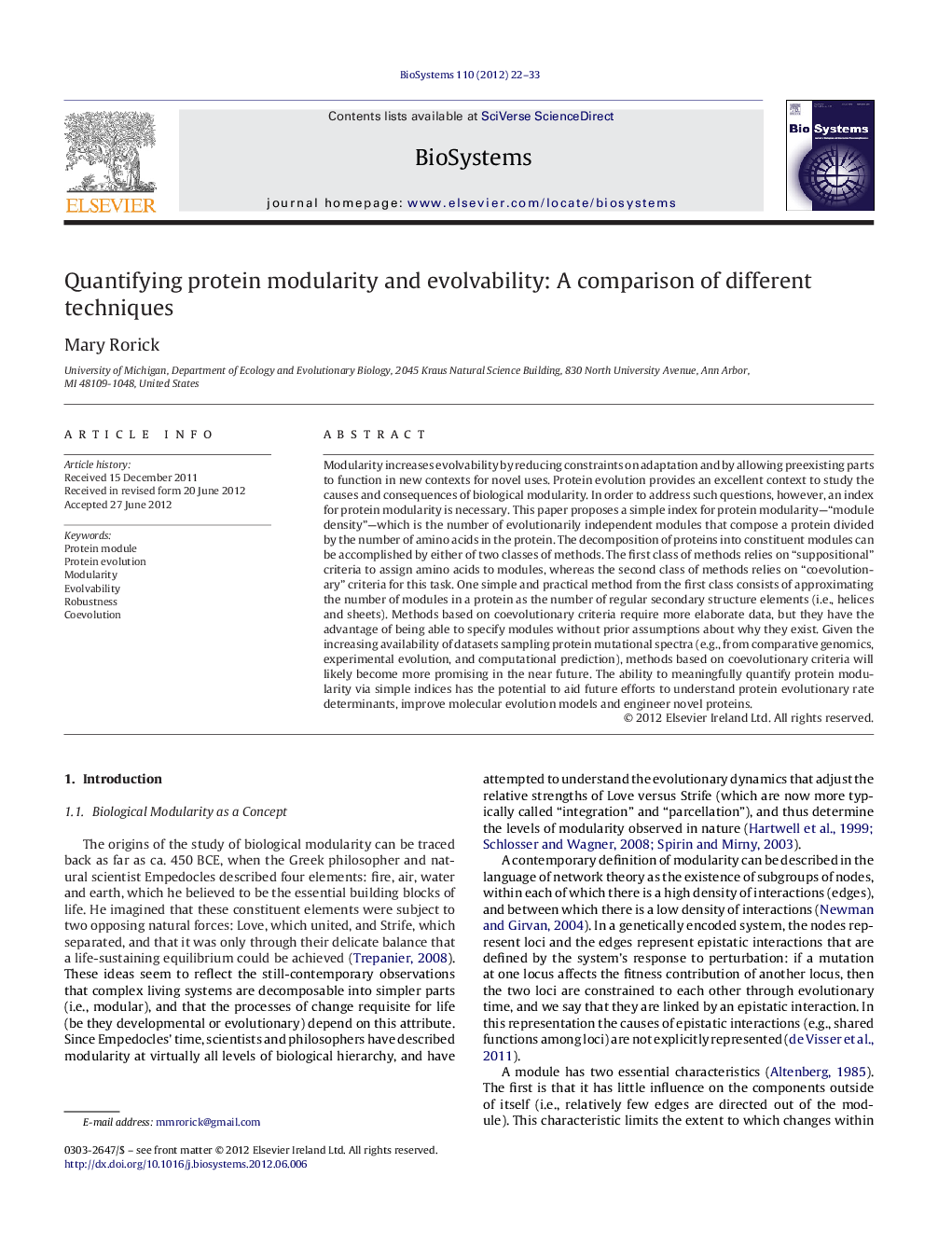| Article ID | Journal | Published Year | Pages | File Type |
|---|---|---|---|---|
| 10884597 | Biosystems | 2012 | 12 Pages |
Abstract
Modularity increases evolvability by reducing constraints on adaptation and by allowing preexisting parts to function in new contexts for novel uses. Protein evolution provides an excellent context to study the causes and consequences of biological modularity. In order to address such questions, however, an index for protein modularity is necessary. This paper proposes a simple index for protein modularity-“module density”-which is the number of evolutionarily independent modules that compose a protein divided by the number of amino acids in the protein. The decomposition of proteins into constituent modules can be accomplished by either of two classes of methods. The first class of methods relies on “suppositional” criteria to assign amino acids to modules, whereas the second class of methods relies on “coevolutionary” criteria for this task. One simple and practical method from the first class consists of approximating the number of modules in a protein as the number of regular secondary structure elements (i.e., helices and sheets). Methods based on coevolutionary criteria require more elaborate data, but they have the advantage of being able to specify modules without prior assumptions about why they exist. Given the increasing availability of datasets sampling protein mutational spectra (e.g., from comparative genomics, experimental evolution, and computational prediction), methods based on coevolutionary criteria will likely become more promising in the near future. The ability to meaningfully quantify protein modularity via simple indices has the potential to aid future efforts to understand protein evolutionary rate determinants, improve molecular evolution models and engineer novel proteins.
Related Topics
Physical Sciences and Engineering
Mathematics
Modelling and Simulation
Authors
Mary Rorick,
